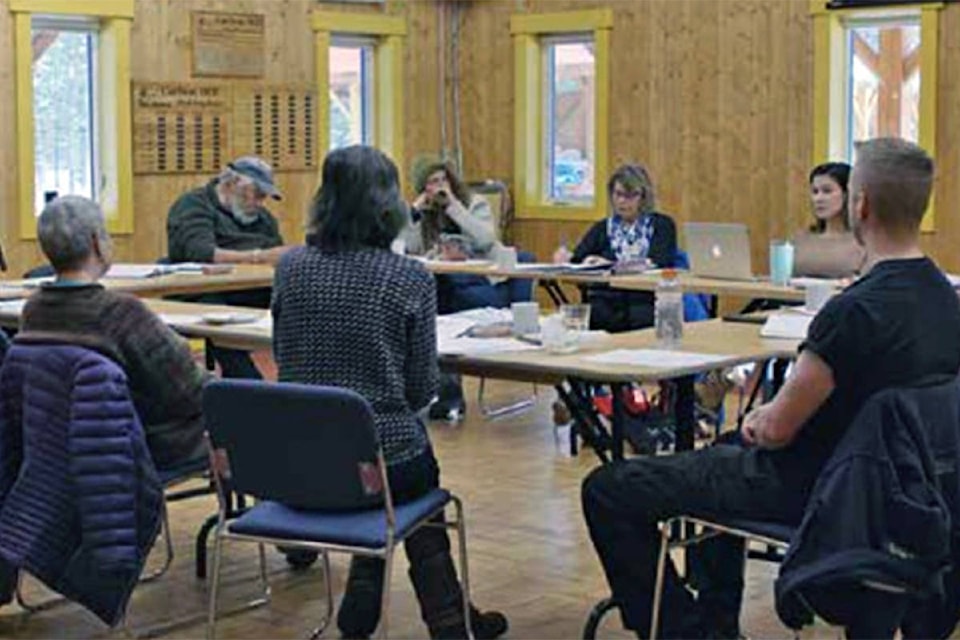October is election month in the Yukon. Usually there is a long list of competitive candidates for City of Whitehorse council positions, but it is not the same story for Yukon’s seven other municipalities and five local advisory councils (LACs). In fact, many councillors in rural Yukon may be acclaimed, and some may be appointed afterwards.
“It’s because it’s a really hard job,” said Andrea Buckley, assistant deputy minister of the department of Community Services. “It is a hard place to be a politician. You can’t go anywhere in town without somebody unloading on what they think. And the smaller the community, the more difficult that job is.”
Buckley says that although there are four different governance structures allowed under Yukon’s Municipal Act — municipalities, local advisory councils, rural government structures and regional structures — only the first two exist. Municipalities and LACs are miles apart, both in terms of responsibility, funding and support, even though their population numbers are often within similar ranges.
For example, the Marsh Lake LAC has over 700 residents which is more than most municipalities, and while Carcross’s demographics are most similar to the municipalities of Teslin, Mayo and Carmacks, it remains a LAC.
While municipal responsibilities are fairly defined in terms of service delivery, the role of local advisory councils is not well understood.
Al Foster, a long-time participant and observer of the Mount Lorne local advisory council, says that’s a large part of the problem in recruiting rural candidates.
“Our biggest problem with the LAC’s is that the community members don’t actually know how they’re set up, or how they actually work, and what powers they have,” Foster said.
According to Foster, it’s not widely understood that LACs don’t hold any actual, independent power or authority. They exist to communicate the concerns of the region to the territorial minister of community services.
Foster says it’s additionally challenging “trying to get the community involved, or bringing forward community concerns, other than just private concerns.” He said there was one member who used to drive up every long driveway in Mount Lorne encouraging people to attend meetings.
The advisory nature of the LACs also means there’s no guarantee that action is taken once concerns are raised, Foster continued.
“The minister has the option of either listening to us, or not listening to us, which is kind of frustrating in some cases,” he said.
Buckley told the News there is no shortage of communication links in the Community Services Department, claiming that local voices are heard by staff and the minister on a daily basis.
Rhiannon Klein, with policy studies and public administration at Yukon University, refers to it as a ‘problem of smallness’.
“Yes, they hear from people all the time, but what do they do with what they hear?” Klein said.
“How do you get issues to the attention of decision makers to move through the policy cycle, where it gets researched, and evidence is gathered, and actually pushes to changing policy or informing decision making?
“I don’t necessarily think that the more individual voices that are raising an issue necessarily pushes issues beyond just attention. I think voices with authority or power, push the issue beyond just attention towards actually informing decisions.”
The “Options for Carcross Governance” report from 2020 cites the frustration that exists at the local level with the advisory council model for that community. While same sized communities receive millions of dollars as municipalities, the LACs receive $15,000 annually and are not allowed to apply for any additional monies from other sources. The local LAC has little input into what happens in Carcross, the same as other LAC communities.
While Foster was very appreciative of the work of the government’s community advisors and the work of the different MLAs over the years, but felt the onus on [LAC] council members who act essentially volunteers, was excessive.
Buckley agreed: “Frankly, it is a lot of work.”
The LAC structure stands in stark contrast with the capital city of Whitehorse, which has a multi-tier governance structure that sees First Nations, the territorial, and municipal governments frequently cooperate with non-profits and development corporations on projects.
In rural Yukon, small numbers of volunteers challenge the basic provision of ambulance, fire, and recreation, let alone people to help set policy and provide good planning direction for a community.
Buckley says that, at one time or another over the last 25 years, just about every community has operated at a high level of capacity, although not consistently.
“It needs the right combination to make it more effective than at other times,” Buckley said.
“My advice to people always is, get out and run.”
Contact Lawrie Crawford at lawrie.crawford@yukon-news.com
